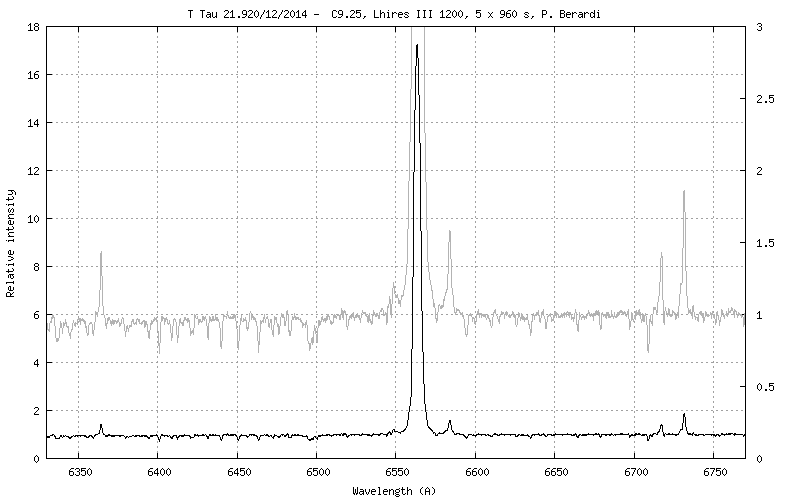I am an astronomer at the Harvard-Smithsonian Center for Astrophysics right now and I want to ask for your help with an observing project:
We are working on classical T Tauri stars, trying to understand how exactly the disks around those stars interact with the star itself. The circumstellar disk in these objects does not reach down to the central star (the inner hole can be resolved in radio observations), but mass from the disk can be funneled into a few accretion spots on the star. These accretion funnels are visible in H alpha and the H alpha equivalent width is a good indicator for the rate of accretion from the disk onto the star. The accretion spots itself become very hot, several million degrees, and shine in X-rays.
We applied for use of the Chandra X-ray telescope to observe T Tau, the namegiver of the class of T Tauri stars to get a spectrum of the X-ray emission from the accretion spots. It would be really useful to also know what the H alpha line is doing at that time. In classical T Tauri stars the H alpha line is typically very wide (about 500 km/s) and in emission. T Tau has V = 9.3 mag, so a low- or medium resolution spectrum does not require an exceptionally large telescope if you expose for e.g. an hour. While it's always helpful to know more details
We'd love to get about one spectrum per night for a couple of days before and after and as much as we can during the Chandra observation. Chandra will observe for over 30 hours, so we need telescopes on more than one site. We have a 1.2 m telescope in Mexico, that will observe from there (weather permitting), but we need support in Europe and if some of you are in America to back us up in case the observations from Mexico fail (they did last time we tried something similar) that would be fabulous.
Observations with Chandra are scheduled not too long in advance due to the way the orbit of the satellite works. T Tau is currently in the long-term schedule for observations some time between 29-Dec-2014 and 12-Jan-2015 (http://cxc.harvard.edu/target_lists/longsched.html), the exact data will only be decided about one week in advance.
The short term schedule is here, but T Tau is not on it yet: http://cxc.harvard.edu/target_lists/stscheds/
I will post an update here when the date is set.
People on this forum tried to help me with a similar science project before (http://www.spectro-aras.com/forum/viewt ... ?f=5&t=246), but unfortunately Europe was covered in dense clouds during the time of the X-ray observations. However, there are sample observations in http://www.spectro-aras.com/forum/viewt ... ?f=5&t=246, that list setup and exposure time for the observations of SU Aur, which has almost the same magnitude as T Tau.
Cheers,
Moritz






